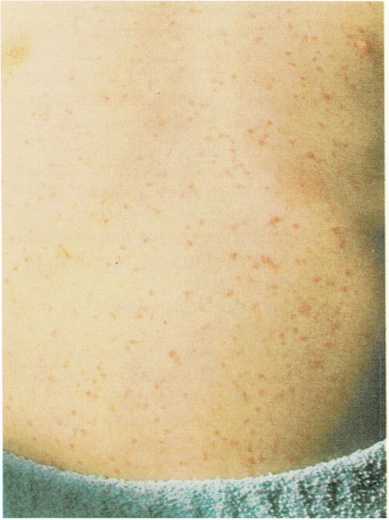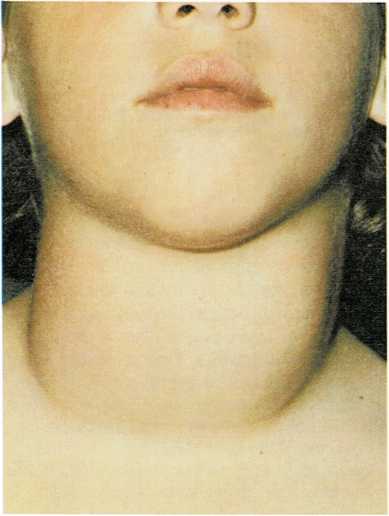Gagging – Growing Pains
Gagging is a reflex action at the back of the throat. Sometimes it
produces vomiting. When babies gag, it is a sign that they are not able
to cope with what is in the mouth and that they may need help.
Many young babies gag easily, and this may cause “spitting up.”
Occasionally, a baby may gag because a bit of dust or lint gets into the
mouth, or because a nipple has been pushed too far into the mouth.
Sometimes babies gag during feeding simply to show that they have had
enough to eat. Children also gag if they are nauseated and about to
vomit.
Babies often gag when first offered solid food, such as cereal. This is
quite natural, because the solid food is strange in consistency and is
difficult for them to swallow. To avoid the gagging, make the food more
fluid and offer it in smaller amounts.
Gagging is an important protection against the entry of solids into the
larynx and breathing passages, where they could cause choking and
suffocation, [m.g.]
Gamma globulin is one part of plasma, the liquid part of blood.
Gamma globulin contains antibodies that help the body fight infection.
When an infection begins, the body manufactures gamma globulin that
includes antibodies to fight that infection. In some cases, after the
infection has cleared up, enough of the gamma globulin remains in the
body to prevent the child from getting that disease a second time. That
is why it is rare for a child to have a disease like measles twice.
Antibody deficiencies may be treated effectively by replacement. The
antibody present in the gamma globulin fraction of blood is isolated
from a large population of human donors. The antibodies isolated
represent the antibody response normally generated by this large group
of people. Therefore, the antibodies received by a patient have the
advantage of representing a broader spectrum than any one individual
could produce. Screening of potentially ill donors in addition to the
standard isolation technique for gamma globulin has resulted in a
product essentially free of the risk of accidental infection. Gamma
globulin may be given by injection either into the muscle or directly
into the bloodstream. Although the latter route results in initially
higher blood levels of antibody, it appears that attaining a gamma
globulin two-thirds of normal will significantly reduce the risk of
infection in antibody-deficient individuals, [j.s.h.]
See also Allergy; Communicable diseases; Immunization; Shots; Virus
Genes. See Heredity
German measles, also called rubella or three-day measles, is a
contagious disease caused by a virus. It is preventable. A child is
usually immunized against German measles at 15 months of age.
German measles occurs most frequently in children between the ages of 5
and 15. Outbreaks of German measles usually occur during late winter and
the spring.
First symptoms of German measles are low fever, sore throat, headache,
and a swelling and hardening of the glands in the

One of the symptoms that may accompany German measles is a
rose-colored rash.
neck and behind the ears. These symptoms appear from 14 to 21 days after
exposure. A rose-colored rash may appear next, although some cases are
so mild that they produce no rash. The rash begins on the face, spreads
over the rest of the body, and lasts two or three days. The spots are
separate at first, but then run together, causing a flushed appearance.
In young children, the rash may be the first symptom. On darker skins,
the rash may not be apparent.
If you suspect that your child has German measles, call your doctor.
Most cases of German measles are so mild that the child usually does not
have to stay in bed. German measles is contagious from about seven days
before the rash appears until about five days after. A child who has had
German measles can usually go back to school one week after the rash
appears. An attack of German measles usually gives a child permanent
immunity to the disease.
German measles can harm an unborn child. If a woman gets the disease
during the first three months of pregnancy, the child may be born with
cataracts, deafness,
developmental challenge, and other defects. Before becoming pregnant, all
women of childbearing age should have a blood test to see if they are
immune to German measles. If a pregnant woman is exposed to German
measles, she should see her doctor as soon as possible.
[h.d.r.,jr.]
See also Communicable diseases; Immunization; Shots; Virus
Glands. See Endocrine
glands; Swollen
glands
Glandular fever. See
Mononucleosis
Goiter is an enlargement of the thyroid gland. This gland is located
in the front of the neck between the top of the breastbone and the
Adam’s apple. The goiter is usually visible as a prominent bulge. In
children, goiters most frequently develop just before the beginning of
puberty, and they are more common in girls than in boys. If you suspect

The swelling in this child’s neck is caused by a goiter.
that your child has a goiter, consult your doctor.
One type of goiter is called a simple goiter. Several conditions can
cause simple goiters:
The thyroid does not produce enough thyroid hormones. Goiters caused
by this can usually be treated with medication.Certain medications or foods may contain goiter-producing agents.
Treatment requires discontinuing the use of those medications or
foods.The thyroid may be chronically inflamed. Doctors do not know what
causes the inflammation. The goiter generally disappears without
treatment, but thyroid medication is usually prescribed.The diet may lack a sufficient amount of iodine. This condition is
rare in the United States and Canada because of the widespread use
of iodized salt.
Another type of goiter is called a toxic goiter. This type of goiter
causes an excessive production of thyroid hormone (hyperthyroidism).
Toxic goiters may produce emotional instability, increased nervousness,
an increase in appetite, and weight loss. Children may lose weight even
though they eat large amounts of food. They may sweat excessively, their
hands may tremble, and their eyes may protrude. The goiter may cause a
feeling of pressure in the neck or even some difficulty in swallowing.
Thyroid-suppressant drugs are generally used to treat toxic goiter. The
drugs must be taken regularly for a number of years. However, they may
not effectively control and eliminate the goiter. In some cases, an
operation is needed to remove part of the thyroid gland,
[m.g.]
Growing pains. Doctors do not believe that growth causes pain in the
feet or legs of children. If your child complains of pain in his feet
and legs, try to find the cause.
Poor alignment of the bones, ligaments, and muscles of the feet and legs
causes the body’s weight to be carried unevenly by the feet and legs.
This is the most common cause of foot and leg pains in young children. A
doctor should examine a child who
limps because of pain or a child who complains that one or both hips or
knees hurt.
Occasionally, a child may have fleeting pain and swelling—sometimes
with redness—in one or more joints. If your child has these symptoms,
call your doctor. This condition may indicate arthritis, osteomyelitis,
rheumatic fever, or other diseases.
Also, a child who exercises a great deal may become fatigued and
complain of painful feet or legs, or may have cramps in them during the
night. Sprains, bruises, and bumps are also possible causes of pain in
the feet and legs. [m.g.]

